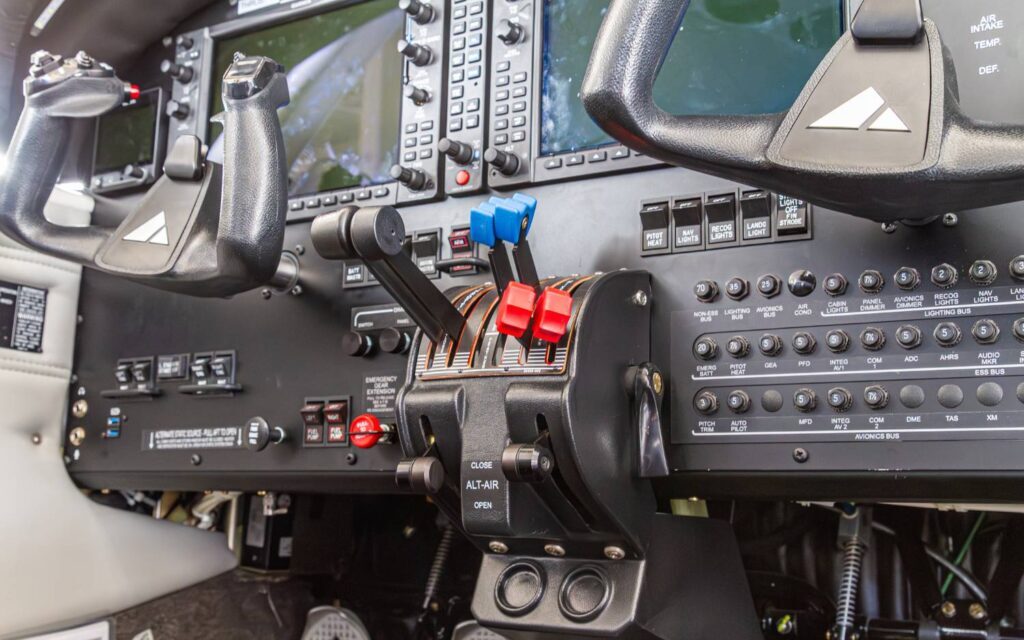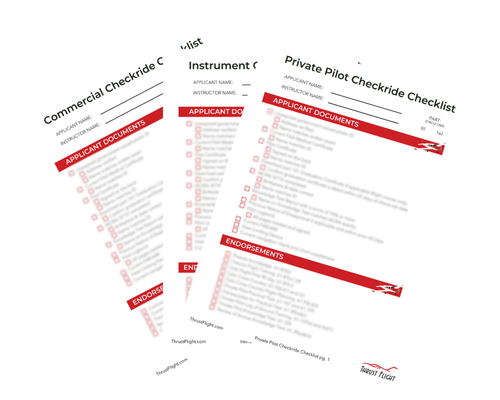As a new pilot there are two methods of flight training you can pursue; Part 141 and Part 61.
There are pros and cons to each method, so there isn’t a universal “best” path—14 CFR Part 61 schools trade structure and FAA oversight for maximum scheduling freedom, while Part 141 schools offer a tightly scripted syllabus, fewer FAA-required flight hours, and access to GI Bill® funding and reduced-hour airline pathways.
Choose Part 61 if you need a learn-at-your-own-pace hobby or side-career option; choose Part 141 if you want the fastest, most regulated route to professional flying (or to tap veterans’ benefits).
A few hybrid models exist, but today you still have to pick one regulatory framework before each check-ride.
Here’s a quick comparison of part 61 vs part 141.
Quick Comparison: 141 vs 61
| Criteria | Part 141 | Part 61 |
|---|---|---|
| Private Pilot Hours | Minimum 35 flight hours | Minimum 40 flight hours |
| Commercial Hours | Minimum 190 total flight hours | Minimum 250 total flight hours |
| Curriculum | FAA-approved, structured syllabus | Instructor-guided, flexible curriculum |
| Scheduling | Typically full-time, structured pace | Flexible, self-paced |
| Oversight | FAA-approved school with audits | Individual instructors or smaller schools |
| Best For | Students pursuing airline careers fast | Students needing flexible scheduling |
Understanding Part 141 vs Part 61 Pilot Training
Both training methods are actually a reference to the regulations that govern them a.k.a. the Federal Aviation Regulations (FARs).
FARs govern everything in the world of aviation, from the type of training you receive to when maintenance is required on airplanes.
As you pursue various licenses and ratings you’ll come to know the FARs quite well.
FAA part 61 outlines exactly what you need for pilot certification while part 141 governs training from flight schools.
An easy way to look at it is a solo certified flight instructor could train you under part 61 but if they are not part of an approved part 141 flight school, they could not train you under those regulations.
Only FAA-approved flight schools that have met all requirements are able to train under Part 141.
Part 61 Flight School
Part 61 flight training offers a flexible, less structured pathway to obtaining your pilot certificates.
One of the main advantages of a Part 61 program is its adaptability, making it ideal for those with busy lifestyles or prior aviation knowledge who may not need the rigid structure of other programs.
Students can progress at their own pace, balancing other life responsibilities with their flight hours.
Part 141 Flight School
Part 141 flight training is tailored for those aspiring to become professional pilots, providing a more formal and regulated learning environment.
Under the Federal Aviation Regulations (FARs), Part 141 schools must follow an FAA-approved syllabus and adhere to a strictly defined training structure.
Key components of Part 141 training include classroom instruction, stage checks conducted by certified flight instructors, and comprehensive ground training.
These structured programs often result in lower minimum flight hours compared to Part 61.
At Thrust Flight, we provide Part 141 training because it ensures a consistent, high-quality education that prepares students thoroughly for a professional aviation career.
The structured environment and rigorous standards help produce well-trained and competent pilots ready to meet the demands of the aviation industry.
An Easy Decision Matrix to Help you Choose 61 or 141
Use the table below to help you decide which training path is the right one for you.
| If you… | Lean toward… | Because… |
|---|---|---|
| Work full-time or can only fly nights/weekends. | Part 61 | Maximum scheduling freedom and pay-as-you-go option. |
| Want the fastest track to the airlines. | Part 141 | Lower hour minima and focused training. |
| Need to use Post9/11 GI Bill benefits | Part 141 | VA funding requires an FAA-approved 141 school. |
| Plan to train purely for recreation. | Part 61 | Less bureaucracy, you can pause and restart your training as needed. |
| Prefer a campus-style, highly supervised environment. | Part 141 | Stage checks & standardized curriculum keep you on track. |
| Value a personal mentor-style CFI relationship | Part 61 & Part 141 | Both pathways can allow you to get personalized help and training as needed. |
What is the Difference Between Part 61 and 141 Flight Training?
The primary difference between the two is the minimum number of hours you have to fly to become a pilot and the standardized curriculum you’ll be taught.
There are specific 141 requirements each student must complete as opposed to general part 61 requirements.
You’ll learn the same material as you go through both training methods but at a Part 141 school, you’ll typically move more quickly.
Both methods require you to meet the same standard of performance to obtain a pilot certificate, and you earn the same exact pilot certificate regardless of which regulations you train under.
Neither system is better than the other; there are pros and cons of both, but ultimately it’s a matter of personal choice. It all depends on your specific needs and goals.
Flight Hours for Part 61 vs Part 141
Under Part 61 someone pursuing their private pilot needs to fly a minimum of 40 hours. Under Part 141 you only need to fly a minimum of 35.
While this may sound like a huge perk it’s important to note that the national average for obtaining a private pilot’s license is between 65-70 hours regardless of the type of training.

Where the FAA minimum requirements really matter is if you are going for your commercial certificate.
Under Part 61, you’ll need to log 250 total flight hours. But you can do so in any way you want. Go visit family, take friends flying, go to a fly-in, and have fun with it!
Under Part 141, you’ll only need to log 190 flight hours, but only if all the hours are flown in the schools approved aircraft, all ratings are attained in the minimum hours, and every flight follows a pre-approved syllabus.
Curriculum for Part 141 vs Part 61
Part 141 schools offer a very structured training environment.
This can be great for those of you who thrive in more strictly organized settings, but for others – especially those not interested in pursuing a career in aviation – it may be too rigid.
Many Part 141 schools may not allow you to choose your instructor, however, most good ones will allow you to be reassigned to another instructor in cases of incompatibility.
In order to train students under Part 141 regulations, a flight school must go through a strict FAA approval process, meet certain FAA requirements, and have each curriculum reviewed and approved by the FAA.
So for each certificate and rating there are specific requirements such as instrument rating requirements part 141 vs 61.
In addition, Part 141 schools are subject to regular surveillance audits by the FAA and must meet minimum pass rates on the FAA written exams.

Part 61 instruction on the other hand isn’t generally as strict in the organization of the material.
While you’ll learn the same material as part 141, your instructor doesn’t need to follow a specific order and can teach in whatever order they choose.
In general, Part 61 instruction moves at a slower pace.
The main advantage of Part 61 flight training is the added flexibility. Since you aren’t following a strict training plan you can bounce around a bit more in your training.
Part 61 training is particularly well suited for pilots who aren’t planning on working professionally.
So if you’re planning on learning on a part-time basis, Part 61 is probably for you.
Part 61 vs Part 141 Ground School
Before you enroll in private pilot ground school, you should decide which type of training you’ll be doing. If you’ll be training part 141, you’ll want to make sure the ground school is also part 141. And the same goes for if you’ll be flying Part 61. You’ll also want to check on this if you choose to attend an online private pilot ground school.
Hopefully this article has helped you understand the difference between part 141 vs 61 flight school.
Still not sure which one is right for you? Reach out to a member of our admissions team to help you determine which is right for you, part 61 vs part 141.
Will this Change in the Future?
The FAA’s 2024 “Pathways for Future Training Opportunity” (PFTO) concept paper floated a hybrid model blending the flexibility of Part 61 with Part 141 oversight, but as of July 2025 no rulemaking has been issued—so the traditional split still applies.
Frequently Asked Questions about Part 141 vs Part 61 Flight Training
What’s the difference between Part 141 and Part 61 flight training?
Part 141 follows an FAA-approved, structured curriculum and typically requires fewer flight hours. Part 61 is more flexible and instructor-driven, allowing for a personalized pace, but generally requires more hours to meet the same certifications.
Which is faster—Part 141 or Part 61?
Part 141 can be faster because it requires fewer minimum hours—35 for a private pilot vs. 40 under Part 61, and 190 vs. 250 for commercial. However, actual completion time depends on the student’s schedule, performance, abilities, and consistency.
Is Part 61 less expensive than Part 141?
Not necessarily. While Part 61 may offer more scheduling flexibility, the additional required hours can lead to higher total costs. And if you train part 61 and don’t fly frequently it typically requires more flight time to master all of the necessary skills you need as a pilot. On the flip side, Part 141 schools may have higher tuition but lower hour requirements and the frequent flying will usually help you master skills in fewer flight hours.
Can I switch between Part 61 vs Part 141?
Yes, but transferring flight hours between programs can be tricky. Not all Part 141 schools accept Part 61 hours toward their syllabus, so it’s best to check with the school before switching.


Comments
One response to “Part 61 vs Part 141: Which Flight Training Path Is Right for You?”
Can you still pursue a career by going through the part 61 method?
I am wanting to start a career as a small aircraft pilot. But with the family being busy and the part 61 path being flexible it seemed the better route to take. But wanted some advice.